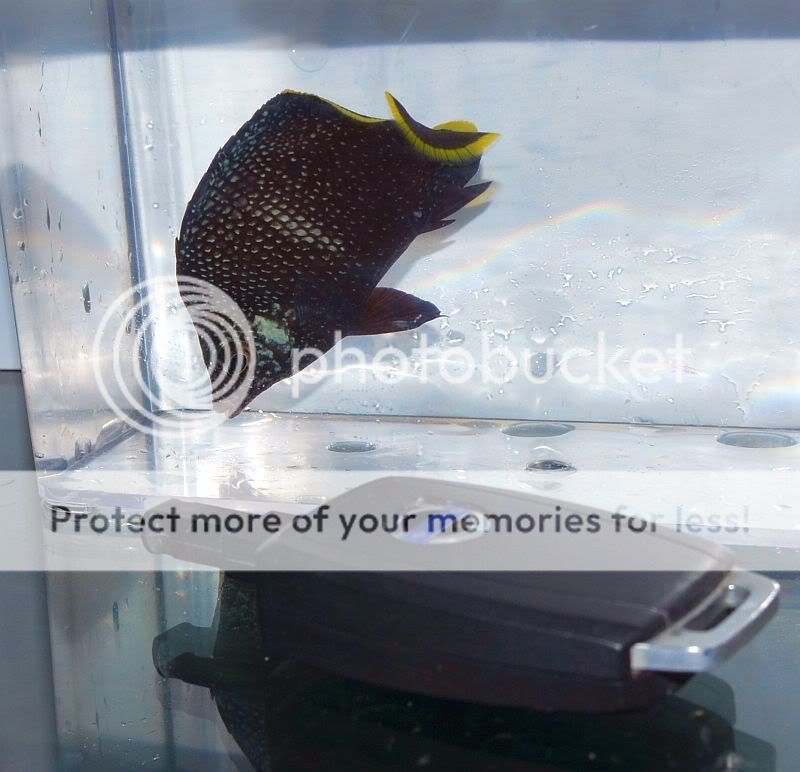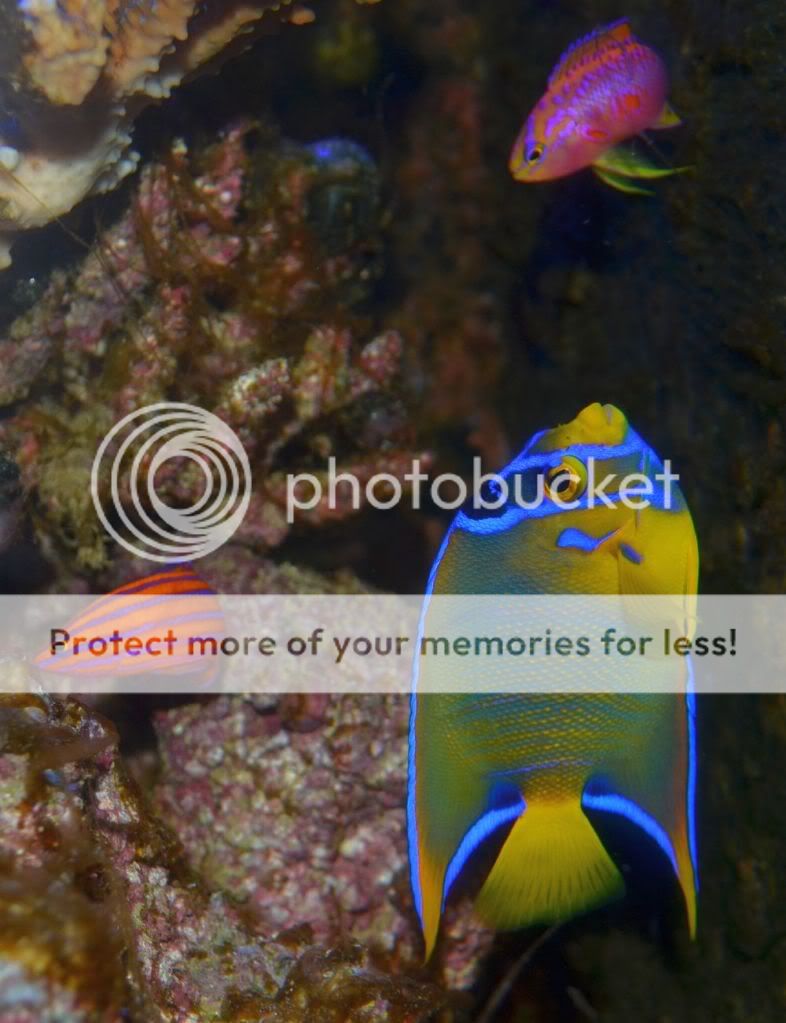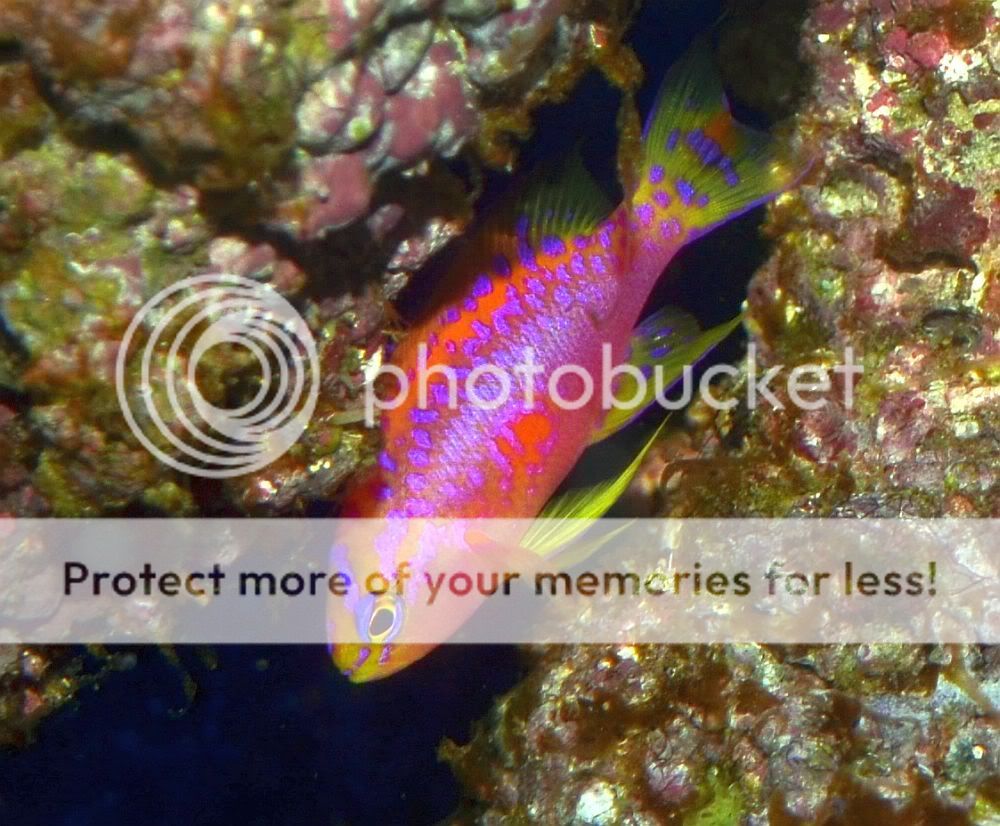copps
Premium Member
Okay guys, so as the saying goes unless you've been living under a rock, anyone who's been in the Reef Fishes forum with any frequency knows I've been an angelfish nut for just about all of my 34 years"¦ I own over 40 angels, many considered rare, and I think I have what is most likely the most special I've ever owned in my life"¦ They just do not get more exciting than this fish!!!
In the past few years there have been a number of very exciting Centropyge hybrids being exported out of Cebu in the Philippines. If you'd like to read the story of the most well known one, refer to my thread from a couple of years ago here that documents flame/ rusty hybrids"¦ I'll soon be publishing a scientific article on these fish along with Luiz Rocha and some others and will go into much more detail then, but suffice it to say that there will be no arguing these fish are not hybrids"¦
http://www.reefcentral.com/forums/showthread.php?t=1702055
But, that is not the hybrid I want to talk about today. Back in May I received photos and word of an interesting fish that was exported out of Cebu directly to a shop in New Jersey (my home state!) called Ocean Gallery II. I also noticed this RC thread"¦
http://www.reefcentral.com/forums/showthread.php?t=2022916
I knew immediately this fish was special. When identifying interesting fish like this that perhaps have genetic input from different species, one of the first things I do is find the origin of the fish. Knowing where the fish was exported from will usually tell you a general region it was collected if you know the industry well, and narrow down the possibilities. Whatever it is has to be geographically possible. Also, after seeing so many fish through the years many times you just get an inkling, even if the fish you are seeing has never been seen or documented before. Such was the case with this very special fish"¦ the moment I saw it I though it was a Centropyge multicolor/ferrugata hybrid (a multicolor/rusty hybrid). WOW WOW WOW WOW!!! I was as excited as I was when I was five or six years old going through the shops with my father.
But, there was a catch"¦ Rusty angels are a Western Pacific fish common throughout the Philippines"¦ input from ferrugata made sense of course"¦ but multicolor"¦ hmm"¦ not documented from the Philippines. But, that did not mean it was not possible. While Centropyge multicolor is a Central Pacific species, so is Centropyge loriculus (the flame angel), and yet flames made the jump to the same area this fish was collected, resulting in the hybrid I address in the thread above. Centropyge multicolor's westernmost documented range, and thus closest to the Philippines, are the beautiful Islands of Palau. Making the extra jump to the Philippines would not be out of the question"¦ so the detective work began.
I contacted Ocean Gallery and got better photos of the fish. The manager, Brian Griffin, is not your average LFS guy and knows the industry well, and was tremendously helpful. He did not know what it was, but knew enough to know it was different. As it turned out Brian had seen me speak at MACNA in Atlantic City a couple of years ago and agreed to send me the fish. I asked if he'd ever received Centropyge multicolor from this exporter before, and he'd thought he had. Later on he got back to me and seen that he had, despite them never being documented from PI before. This is not out the question and is actually VERY common. Many of the expanded ranges of reef fish species nowadays come from the aquarium industry. Well, it turns out that the region this fish was collected in the Philippines actually does have a population of Centropyge multicolor! That is HUGE news! Of course, as with almost everywhere else in PI, rusties are also found there.
While rusty and flame angels are very closely related, multicolors are not. That, combined with the fact that this is the only hybrid like this I've ever seen, leads me to believe this is a result of "œaccidental hybridization", where the sperm of one species fertilized the egg of another while two harems were spawning near each other. With the flame and rusties I theorize that the lone flame angel, rare in PI, forms harems with the common rusty and spawn. The numbers of these hybrids in the area support that theory, along with other evidence we'll publish in the paper. Accidental hybrids are extremely rare for obvious reasons"¦
So, without further adieu, here are some photos. My apologies for the quality, but my old Nikon D80 DSLR went bad and I am in the process of getting a new one, so these were taken with my wife's point and shoot. I did not want to add additional stress to this fish by giving it my normal photo shoot in the specimen container with my now famous car key shot. This fish was very small when I got it"¦ maybe 1 ¼" or so. The pics are a few months old now and the fish has been through a couple of months of QT and is now in my subtropical tank. I'll get updated shots soon.
This fish was very small when I got it"¦ maybe 1 ¼" or so. The pics are a few months old now and the fish has been through a couple of months of QT and is now in my subtropical tank. I'll get updated shots soon.
So, I've had some special fish"¦ some based on just a few specimens, but never a one of a kind!

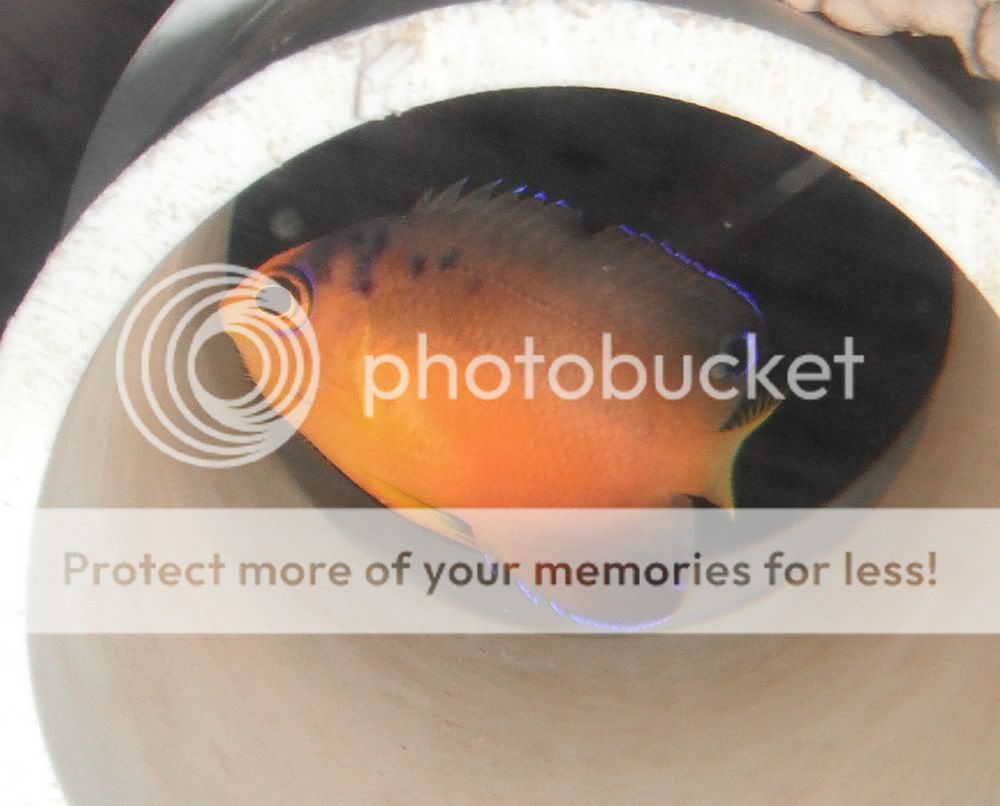
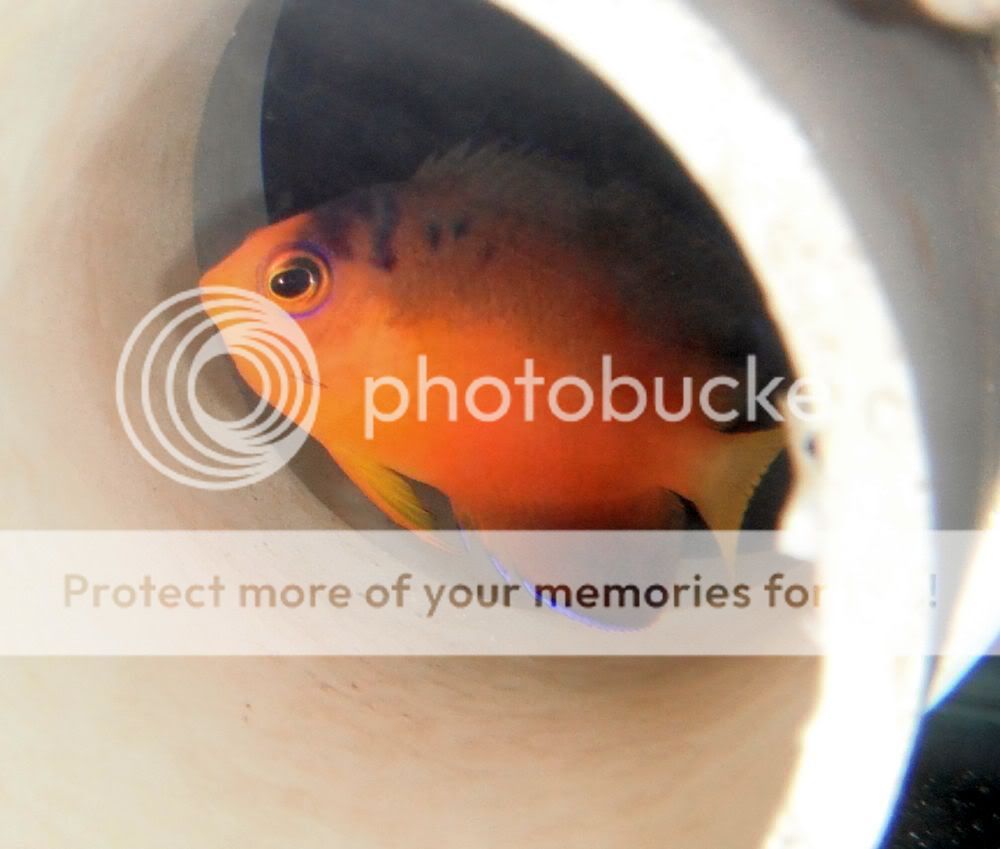
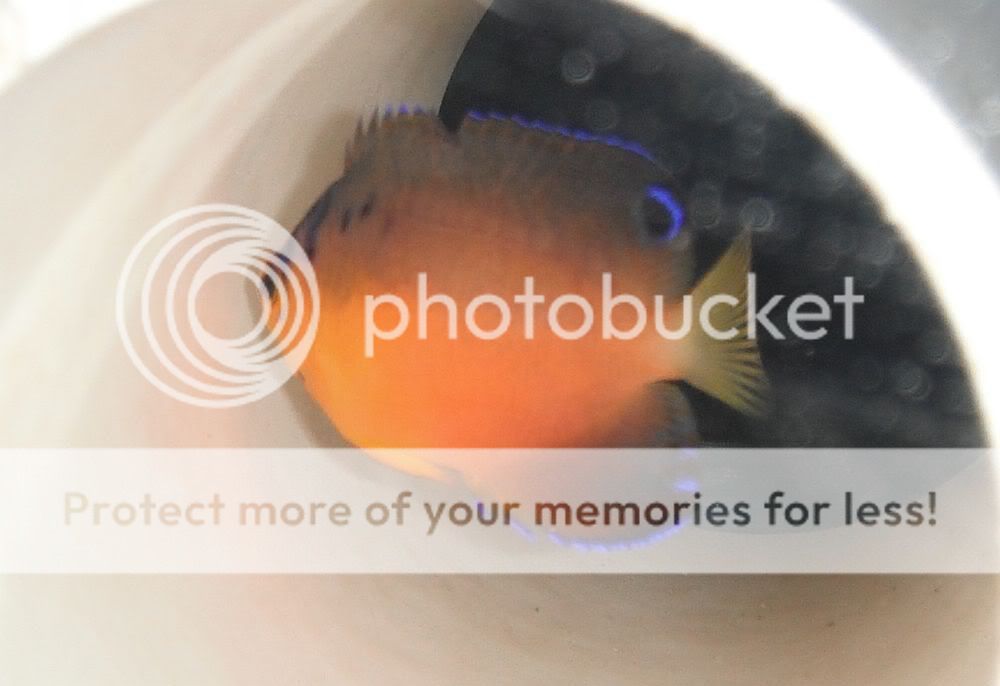
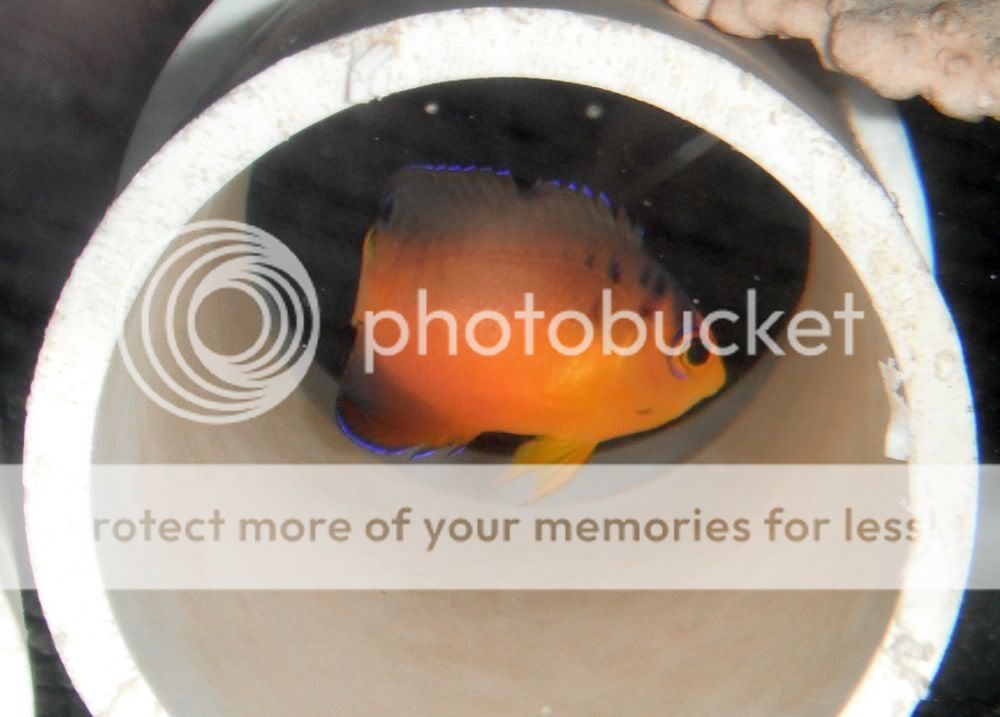
Ironically, this fish looks very similar to the very rare Centropyge debelius"¦ but this species is found far away from Philippines in the Western Indian Ocean"¦ yet that might not be just a coincidence, although I feel this fish has no direct relation to Centropyge debelius. This is a shot of the pair of debelius I owned years ago"¦
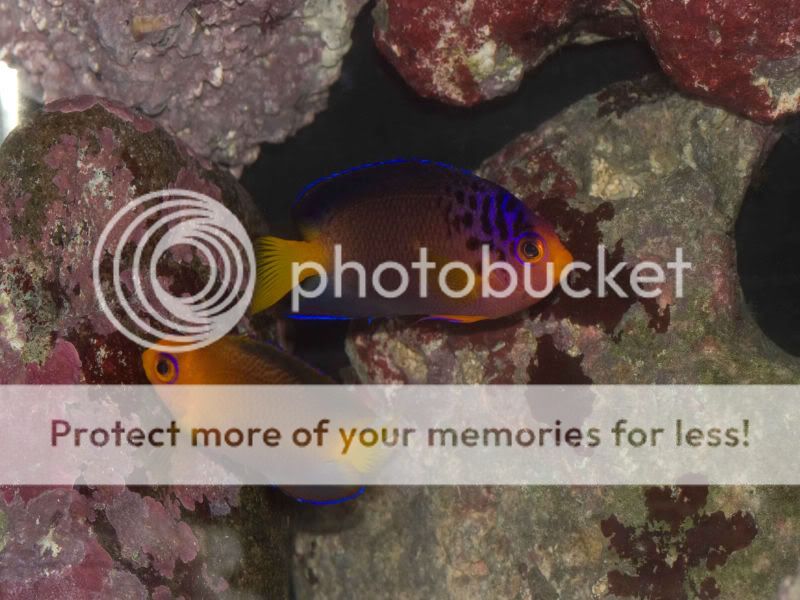
Anyway, this little guy has settled well into his subtropical home"¦ I simultaneously added it on the same day with another very special hybrid Centropyge from Hawaii"¦ a Centropyge fisheri/potteri hybrid. This one is just one of three documented of these hybrids, with the second one being in my freezer! This is most likely another "œaccidental hybrid", and is to this day the only documented hybrid between the three subgenera of Centropyge"¦
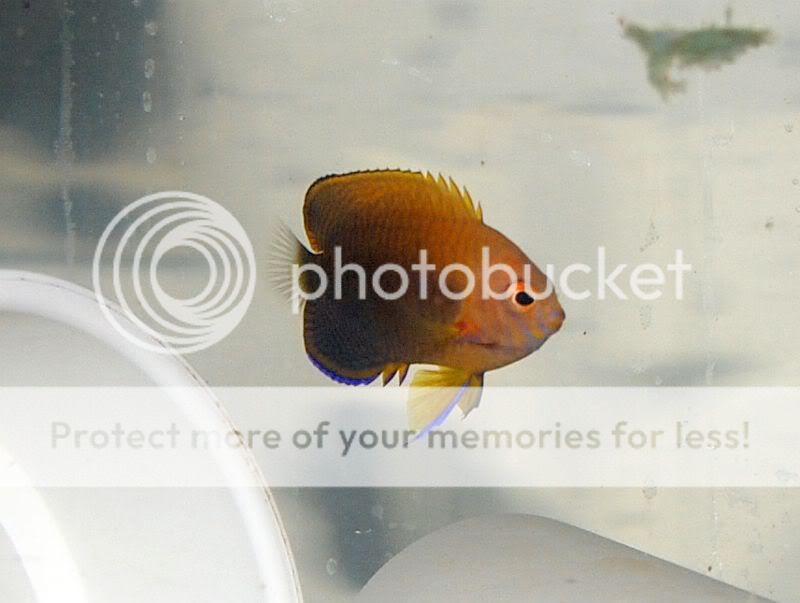

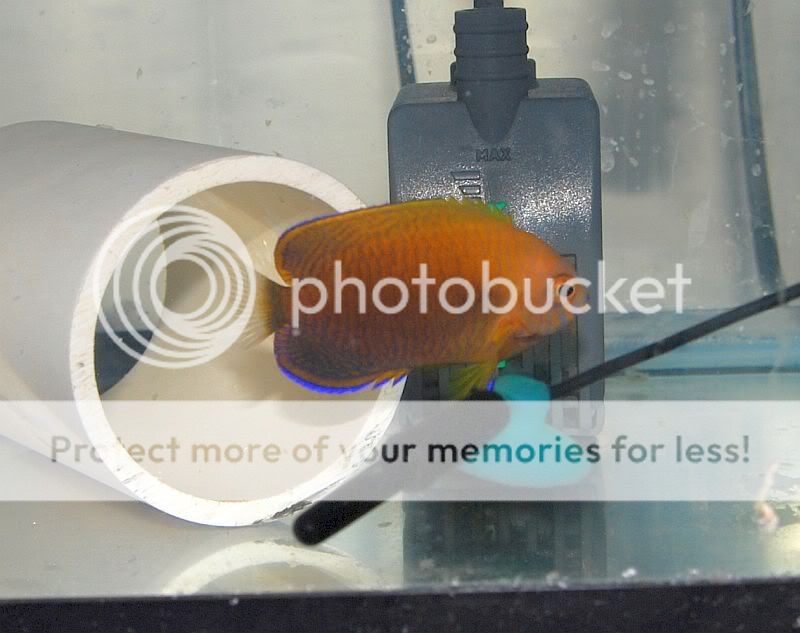
The two get along fine, and have darkened up under the bright lighting as expected, grown, and settled in well. Again, many thanks to Brian from Ocean Gallery II.
Copps
In the past few years there have been a number of very exciting Centropyge hybrids being exported out of Cebu in the Philippines. If you'd like to read the story of the most well known one, refer to my thread from a couple of years ago here that documents flame/ rusty hybrids"¦ I'll soon be publishing a scientific article on these fish along with Luiz Rocha and some others and will go into much more detail then, but suffice it to say that there will be no arguing these fish are not hybrids"¦
http://www.reefcentral.com/forums/showthread.php?t=1702055
But, that is not the hybrid I want to talk about today. Back in May I received photos and word of an interesting fish that was exported out of Cebu directly to a shop in New Jersey (my home state!) called Ocean Gallery II. I also noticed this RC thread"¦
http://www.reefcentral.com/forums/showthread.php?t=2022916
I knew immediately this fish was special. When identifying interesting fish like this that perhaps have genetic input from different species, one of the first things I do is find the origin of the fish. Knowing where the fish was exported from will usually tell you a general region it was collected if you know the industry well, and narrow down the possibilities. Whatever it is has to be geographically possible. Also, after seeing so many fish through the years many times you just get an inkling, even if the fish you are seeing has never been seen or documented before. Such was the case with this very special fish"¦ the moment I saw it I though it was a Centropyge multicolor/ferrugata hybrid (a multicolor/rusty hybrid). WOW WOW WOW WOW!!! I was as excited as I was when I was five or six years old going through the shops with my father.
But, there was a catch"¦ Rusty angels are a Western Pacific fish common throughout the Philippines"¦ input from ferrugata made sense of course"¦ but multicolor"¦ hmm"¦ not documented from the Philippines. But, that did not mean it was not possible. While Centropyge multicolor is a Central Pacific species, so is Centropyge loriculus (the flame angel), and yet flames made the jump to the same area this fish was collected, resulting in the hybrid I address in the thread above. Centropyge multicolor's westernmost documented range, and thus closest to the Philippines, are the beautiful Islands of Palau. Making the extra jump to the Philippines would not be out of the question"¦ so the detective work began.
I contacted Ocean Gallery and got better photos of the fish. The manager, Brian Griffin, is not your average LFS guy and knows the industry well, and was tremendously helpful. He did not know what it was, but knew enough to know it was different. As it turned out Brian had seen me speak at MACNA in Atlantic City a couple of years ago and agreed to send me the fish. I asked if he'd ever received Centropyge multicolor from this exporter before, and he'd thought he had. Later on he got back to me and seen that he had, despite them never being documented from PI before. This is not out the question and is actually VERY common. Many of the expanded ranges of reef fish species nowadays come from the aquarium industry. Well, it turns out that the region this fish was collected in the Philippines actually does have a population of Centropyge multicolor! That is HUGE news! Of course, as with almost everywhere else in PI, rusties are also found there.
While rusty and flame angels are very closely related, multicolors are not. That, combined with the fact that this is the only hybrid like this I've ever seen, leads me to believe this is a result of "œaccidental hybridization", where the sperm of one species fertilized the egg of another while two harems were spawning near each other. With the flame and rusties I theorize that the lone flame angel, rare in PI, forms harems with the common rusty and spawn. The numbers of these hybrids in the area support that theory, along with other evidence we'll publish in the paper. Accidental hybrids are extremely rare for obvious reasons"¦
So, without further adieu, here are some photos. My apologies for the quality, but my old Nikon D80 DSLR went bad and I am in the process of getting a new one, so these were taken with my wife's point and shoot. I did not want to add additional stress to this fish by giving it my normal photo shoot in the specimen container with my now famous car key shot.
So, I've had some special fish"¦ some based on just a few specimens, but never a one of a kind!





Ironically, this fish looks very similar to the very rare Centropyge debelius"¦ but this species is found far away from Philippines in the Western Indian Ocean"¦ yet that might not be just a coincidence, although I feel this fish has no direct relation to Centropyge debelius. This is a shot of the pair of debelius I owned years ago"¦

Anyway, this little guy has settled well into his subtropical home"¦ I simultaneously added it on the same day with another very special hybrid Centropyge from Hawaii"¦ a Centropyge fisheri/potteri hybrid. This one is just one of three documented of these hybrids, with the second one being in my freezer! This is most likely another "œaccidental hybrid", and is to this day the only documented hybrid between the three subgenera of Centropyge"¦



The two get along fine, and have darkened up under the bright lighting as expected, grown, and settled in well. Again, many thanks to Brian from Ocean Gallery II.
Copps


